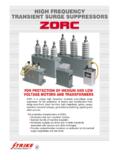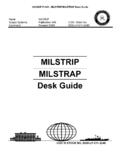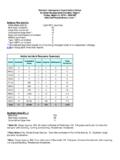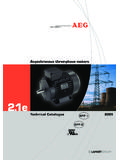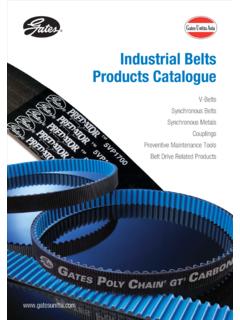Transcription of MOTOR ABC 76 - Siemens Electric Motors - Simotech
1 1 MOTOR ABC For Siemens Low-Voltage Three Phase Motors 2004 Technical revised and translated by: Siemens AG Automation & Drives Standard Drives 91050 Erlangen 2 Table of Contents Table of Contents 1 Technic (Index) 7 A ..7 Alternating load ..7 Ambient temperature ..8 Anti-condensation heating ..8 Asynchronous generator ..9 Axial eccentricity ..9 B ..10 Balancing ..10 Bearing Belt Brakes ..12 Brake lining wear ..13 Built-in C ..15 Cantilever force - Radial CEMEP CEMEP EC project ..16 Centrifugal Concentricity ..16 Cooling types ..17 Cos phi ..20 Cradle dynamometer ..20 Critical speed ..20 CSA Canadian Standards Customer benefits of energy-saving D ..24 Dahlander circuit ..24 Dimension Deckwater-proof Deflection amplitude.
2 26 Degree of protection - according to DIN VDE 0530, Part 5 ..27 Differences between CEMEP - Direction of DURIGNIT 2000 ..30 Duty E ..40 Effective output at the MOTOR shaft ..40 Efficiency ..40 EPACT definition ..41 EPACT legislation ..41 European Standards ..42 for firedamp and explosion-protected electrical Explosion Fail-safe brake ..45 Fans and blowers ..45 Fan drives ..46 Firedamp protection ..47 Flexible coupling ..47 Flywheel Frequency change ..48 3 Forced ventilation ..48 Foundation vibration ..48 Frame Frame sizes ..50 G ..51 Geared Grease ..51 Grease Grease valve grease slinger ..52 Grounding (earthing) stud ..52 H ..53 Heavy-duty starting ..53 Height above sea Heyland circuit ..54 High-resistance squirrel-cage rotor.
3 54 High-voltage IJ ..56 IEC regulations ..56 Information and certificates ..57 Inline pumps ..57 Inrush Insulation Class ..58 L ..59 Lifetime ..59 Line supply (UK: Mains)..60 Load Locating bearings ..62 M ..63 Magnetically operated brake ..63 Moment of inertia ..63 Modular mounted MOTOR protection ..64 MOTOR running connection ..65 Motors with thermally critical Motors with thermally critical stator ..66 Mounting the coupling and other machine elements in the MOTOR plant ..67 MRPD ..68 Multi-voltage N ..69 National and international regulations ..69 NEMA regulations ..72 Nominal values ..73 Non-sparking version ..73 Zone 2 in compliance with IEC 60 079-15 for Motors connected directly to the line supply ..73 Noise.
4 74 No-load starting No-load current ..78 O ..79 On time ..79 Open-circuit cooling ..79 Overload capability ..80 P ..81 Paint finish ..81 PAM Performance value (efficiency/power factor) ..85 Plug-type braking ..85 4 Pole changeover ..86 Pole number ..86 Power ..87 Power split ..88 Pre-loaded Protective canopy ..89 Protective PTC thermistor (PTC) ..90 Pull-in Pumps ..90 R ..91 Radial Radio interference suppression ..91 Radial sealing ring or Ina sealing ring ..92 Rating Ratio ..94 Reactive Reactive power ..96 Reduction Reinforced Required MOTOR output in kW ..97 Residual voltage ..98 Responsibility in appropriately marking their Motors (CEMEP) ..98 Re-lubrication device ..100 Roller-table Rotating the terminal box.
5 101 Rotor Rotor locking Roller Rush torque ..103 S ..104 Safety couplings ..104 Second standard shaft end ..104 Selecting a MOTOR type - overview ..104 Low-voltage squirrel-cage induction Motors for three-phase line supplies 104 Selected MOTOR Service factor - overload factor ..105 Shaft seals ..105 Shaft-mounted fans ..106 Shaft output at 50Hz ..107 Siemosyn MOTOR ..107 Single-phase Motors ..108 Single-phase operation ..109 Slide rails ..109 Soft Speed ..110 Speed monitor ..111 Squirrel-cage rotor ..112 Stamped values / output ..113 Standards and regulations for low-voltage Motors ..113 Standard voltages - according to DIN IEC 38 (European voltage) ..115 Starting performance ..116 Starting Star-delta starting.
6 118 Star-double star Surface cooling ..121 Switched operation ..122 Synchronized asynchronous MOTOR ..122 Synchronous Motors ..122 TEFC ..123 KTY 84-130 temperature sensors ..123 Temperature Class ..124 Temperature rise ..125 Temperature rise ..125 Temperature rise Temperature rise TENV ..127 Terminal Terminal boxes ..127 Te Torque ..130 Trans-standard Types of according to DIN IEC 34, Part 7 ..132 Types of protection ..134 U ..135 UNEL-MEC ..135 V ..136 VDE regulations ..136 Vibration severity ..136 Comment 2: ..137 Vibration immunity ..138 Voltage selection ..139 Voltage changes ..139 Voltage drop along the feeder cable ..140 V ring - axial sealing Water condensation drain hole ..143 Winding protection.
7 145 Requests and Requirements from Armored cables or screened Cable entry thread in NPT / thread hub size in NPT ..146 Bearing insulation ..147 Bearing temperature Breakdown Class I Division 1 group A - D ..147 Class II Division 1 group E - G ..148 Class III Division 1 ..148 Class I Division 2 group A - D ..148 Class II Division 2 group E - G ..148 Class III Division 2 ..149 Conductor size acc. to AWG ..149 CT or DIP Enclosure made of ferrous metals ..150 External earthing (grounding)..150 FLT ..150 Ia/In =< or similar ..150 L10 liftime acc. to ISO R LRC ..151 6 Locked rotor time ..151 Lubrication data ..151 Cooling methods ..152 Mil norm ..152 Motors acc. to Mounting a half coupling ..152 Stainless steel nameplate.
8 152 Nameplate in acc. to IEC 34-1 ..152 NDE ..153 NEMA design NEMA - MG1 ..153 NEMA 4 ..153 NLC ..153 NPT ..153 Polarization index ..154 PTC ..154 Pull-in Pull-up torque ..154 rms Residual field 100% ..154 RHS ..154 RTD ..155 Service factor ..155 Squirrel-cage rotor ..155 Successive starts from cold ..155 Temperature rise 80K ..155 Terminal box shall be segregated from the MOTOR Vibration severity limits acc. to Winding temperature detectors ..156 Reduced output (de-rating) ..156 Limit torque characteristic ..157 Drive operation with a square-law load torque ..159 Rotary pulse Explosion protection for the North American market ..160 Lubrication information plate ..161 Cable glands in NPT ..162 Code letter acc.
9 To NEMA MOTOR - drive 7 Technic (Index) A Alternating load One of the most frequent deviations from the duty types, defined in accordance with VDE 0530 is that the power demanded by the load is not constant during the intervals that the MOTOR is under load. In this case, the power (current, torque) can be replaced by an average power (current, torque). This is the squared average value of the individual loads. The maximum torque which occurs in this case may not exceed 80% of the stall torque. If the required higher power is a factor of 2 higher than the smallest power, then the average power is not accurate enough. In this case, the average current must be used for the calculation. This average value generation is not possible for an S2 duty type (please inquire).
10 (also refer to Switched operation) 8 Ambient temperature All Motors , in their standard version, can be operated at ambient temperatures of -20 C to +40 C. Further, standard Motors can be operated with a cooling medium temperature of up to 55 C and utilized according to temperature rise Class F. For Motors with options C11, C12 and C13, the winding is already utilized to temperature rise Class F. However only one option is permitted and it may not be fed from an AC drive. The Motors have temperature rise Class F and are utilized according to temperature rise Class B. If this utilization is to be kept, and if the conditions change, the permissible output must be reduced (de-rated) corresponding to the adjacent table.
